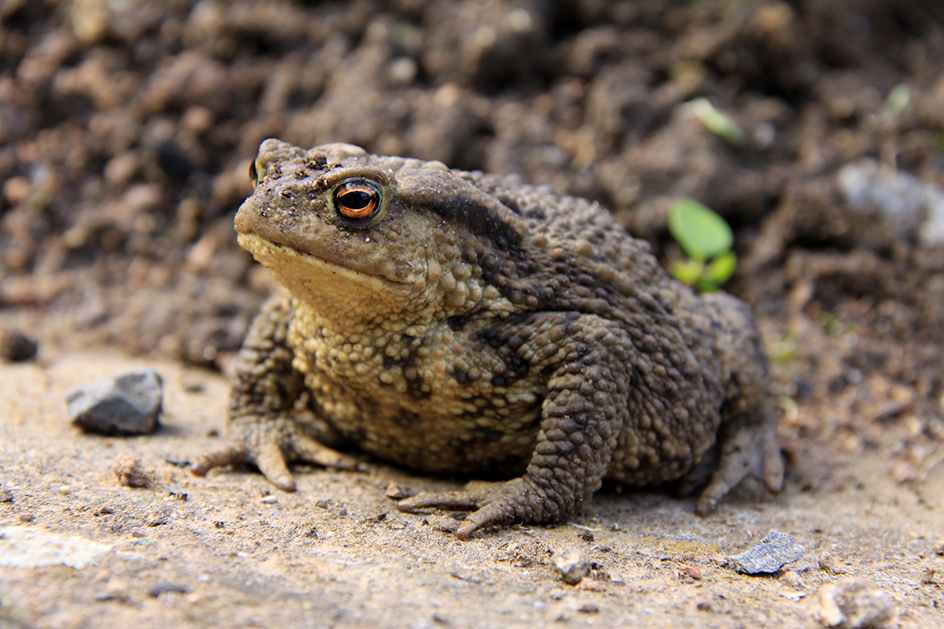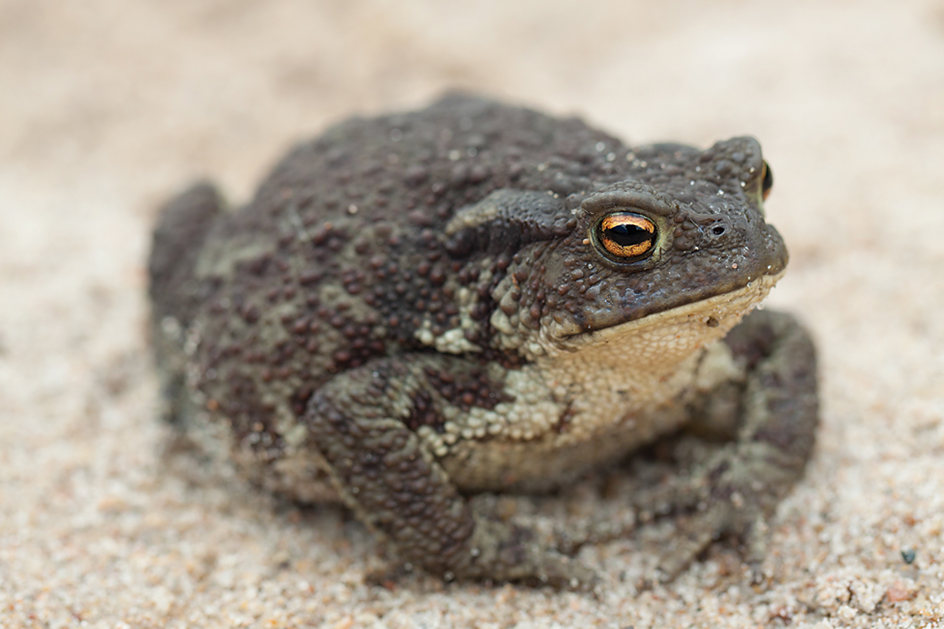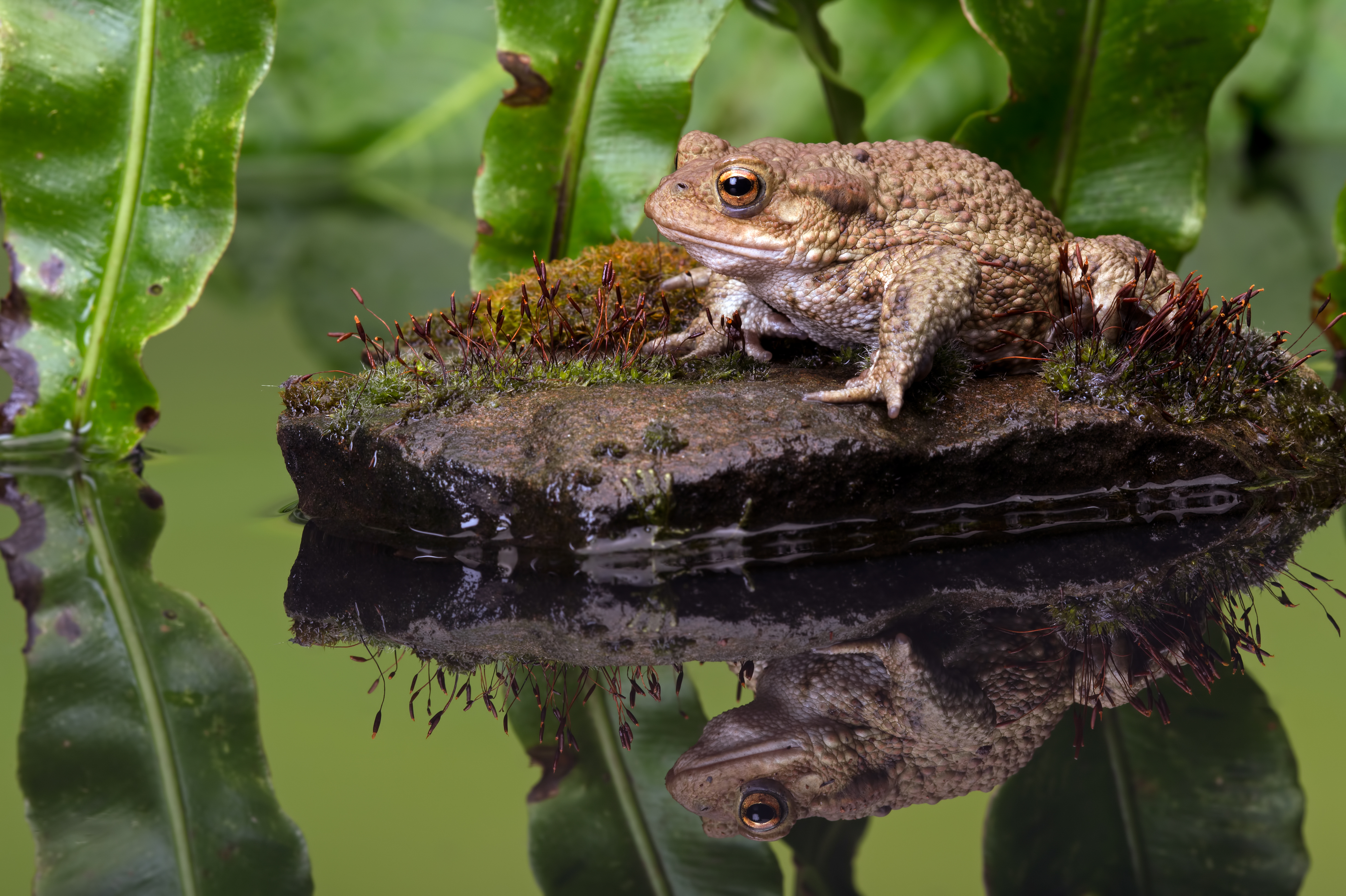Toad is a name used for certain types of frogs. Toads belong to a class of animals called amphibians. Amphibians live part of their life in water and part on land. Frogs and toads are not really different animals. Rather, toad is a familiar term used for certain kinds of frog. The term toad is most often applied to species (kinds) of frogs that tend to live in dry habitats. These species have drier skin and shorter back legs. Another feature of toads is a rough, bumpy skin texture. Glands in the skin form raised tubercles that look like warts. Despite the superstition, a person cannot get warts from touching a toad.

Many toads are dull brown or gray. A few species have vivid coloring, such as green stripes or red spots. A pair of parotoid glands on top of a toad’s head produces a poison. This poison can make people ill or irritate their eyes. The poison also has an unpleasant taste. It helps protect the toad from predators (hunting animals).

A toad has a long, sticky tongue that is attached to the front of the lower jaw. It can flip the tongue forward to grasp such prey as insects and other small animals. Once the animal is inside the mouth, the toad will blink its eyes very quickly. This causes the eyes to bulge downward into the mouth cavity and helps push the prey off the tongue to be swallowed.
Toads and all other frogs make up the scientific order Anura. Members of several families in this order are commonly called toads. But zoologists often refer to the family Bufonidae as the true toads. The true toads are unique for their visible parotoid glands and also for having no teeth. For information on other members of the order Anura, see the section Kinds of frogs in the Frog article.
The life of a toad.
The larvae, or tadpoles, of most toads grow up in water. The adults usually spend most of their adult life on land. They return to water to breed. Temporary pools from spring or summer rain are typical breeding sites. Some toads will use streams. Among most toads, the male attracts the female with a mating call. A few kinds of toads do not have a mating call.
Almost all female toads lay eggs. Some females lay more than 30,000 eggs at a time. The female deposits eggs in the water. As she does, the male clings to her body and fertilizes them. Toad eggs look like tiny, black spots, usually in long strings of clear jelly. The jellylike substance helps protect the eggs.
Within a few days, small tadpoles hatch from the eggs. The tadpoles remain in the water as they go through a process called metamorphosis. In this process, the tadpoles gradually develop the characteristics of the adult toad. In most toads, metamorphosis takes from three to eight weeks. The young toads then leave the water and begin their life on land. Young toads grow rapidly. Some reach adult size in a year or less. Some species, such as the African live-bearing toads, do not return to water to breed, do not lay eggs, and do not have a tadpole stage. Among these toads, the female gives birth to small, fully formed toadlets.
Toads avoid direct sunlight and heat. They are most active at night or on rainy days. During hot, dry spells, toads dig deep into the ground and remain there. This behavior is called estivation. Toads in areas with harsh winters hibernate underground during the cold weather.
Many animals prey on tadpoles and young toads. In North America, a chief predator of adult toads is the hognose snake. A toad’s poison does not affect this snake.
Scientists do not know how long toads live in the wild. Toads have lived more than 30 years in captivity.
Kinds of toads.
There are hundreds of species of toads. More than a dozen of them live in North America. The American toad is common in fields, gardens, and woods of the Northeastern United States. It is about the size of a child’s fist. Females are much larger than males. The Southern toad, slightly smaller, is common in the Southeast. Males of both species have a pleasant, high-pitched trilling call. One of the most widespread North American species is Woodhouse’s toad. It lives throughout most of the United States and in parts of northern Mexico. The call of the male Woodhouse’s toad is loud and sounds somewhat like the bleat of a sheep.

The cane toad ranks as one of the largest toads. It is also called the giant toad and marine toad. It may grow up to 9 inches (23 centimeters) long. This toad once lived only in southern Texas and tropical regions of Central and South America. It is now also found in other regions, including Australia, the Philippines, and southern Florida. Two of the smallest toads are Rose’s toad of South Africa and the oak toad of the Southeastern United States. The adults measure about 1 inch (2.5 centimeters) long.

